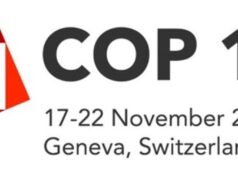The number of self-employed and voluntary members (SEVM) of the Social Security System (SSS) increased by 20.2 percent to 8.43 million, as of May 2021.
SSS President and Chief Executive Officer Aurora C. Ignacio said the double-digit jump in voluntary and self-employed membership is a clear indicator that more individuals now recognize the value of SSS coverage, particularly the benefits and privileges the pension fund offers, more than ever during these challenging times.
“While mobility is affected as a result of community quarantines and lockdowns, the pandemic did not stop SSS in its campaign for universal coverage, especially for those in the informal sector. We made sure that our online facilities—particularly our social media accounts, online seminar sessions, and e-learning portal—remained active and widely accessible to continuously inform the public and our members that social security protection is an affordable investment and savings option during this pandemic and in the future,” Ignacio said.
Of the 40.52 million total covered SSS members as of May 2021, about 8.3 percent or 3.36 million are self-employed, while 12.5 percent or 5.07 million are voluntary members.
“It is also important for SSS to focus our promotion to self-employed professionals and non-working spouses who are not yet SSS members, as well as employees who were separated from employment, so that they can benefit from social protection. Being part of the 3.73 million unemployed individuals (per the latest Labor Force Survey of the Philippine Statistics Authority, as of May 2021), they are deemed as the most vulnerable members of the society. SSS coverage is the most affordable form of social security they can avail of,” Ignacio said.
A self-employed member should not be over 60 years old and has no employer other than himself/herself, and derives a monthly income of P3,250 below from trade, business or occupation. These include self-employed professionals; partners and single proprietors of businesses; actors and actresses, directors, scriptwriters, and news correspondents who do not fall within the definition of the term “employee;” professional athletes, coaches, trainers, and jockeys; individual farmers and fisherfolks; workers in the informal sector such as market and ambulant vendors, transport workers, and those similarly situated. Contractual and job order personnel engaged by the government through a Contract of Service and who are not covered by the Government Service Insurance System (GSIS) and other self-employed persons as may be determined by the Social Security Commission (SSC) are also included in this category.
A voluntary member, meanwhile, could either be a non-working spouse (NWS) of an SSS member or a separated member. NWS members are those who are legally married to a currently employed and actively paying SSS member, devoting full time in the management of household and family affairs, and has never been a member of the SSS. Those separated from employment or have ceased to be self-employed, an Overseas Filipino Worker (OFW), or an NWS but intends to continue paying SSS contributions on his/her own account, falls under this category.
Regularly paying, self-employed, and voluntary members are entitled to the same social security benefits such as sickness, maternity, disability, retirement, death, and funeral benefits. They are also qualified to avail of member loans for salary, calamity, and educational assistance as well as pension loan once they become retiree-pensioners.
“Like covered employees in the private sector and household workers, self-employed members are now covered as provided in the Employees’ Compensation Program (ECP) and now have additional benefits in the event of work-related contingencies such as sickness, injury, disability, or death,” Ignacio added.
SEVMs are also encouraged to pay their contributions regularly—either on a monthly or quarterly basis on or before the deadline of remittance, which is on the last day of the month following the applicable month or calendar quarter. If the payment deadline falls on a weekend or holiday, payment may be made on the next working day. This also applies to loan repayments that must be paid on the last day of the month following the applicable month, to avoid incurring the 1% penalty per month.
“With the growing number of our payment partners, SEVMs may pay their contributions and loan repayments at their preferred channel at their convenience. An updated list of our official bank and non-bank collecting partners, internet banking, and mobile facility, is available online from our social media accounts and also downloadable on our official SSS website at www.sss.gov.ph,” Ignacio concluded.
To facilitate payments, SEVMs are advised to register online at My.SSS to generate Payment Reference Numbers (PRNs) for transactions and update their contact information for timely receipt of statements and other notices.
For more information and update, members may follow the SSS Facebook page at the “Philippine Social Security System,” Instagram account at “mysssph,” Twitter account at “PHLSSS,” and SSS Viber Community “MySSSPH Updates.”





